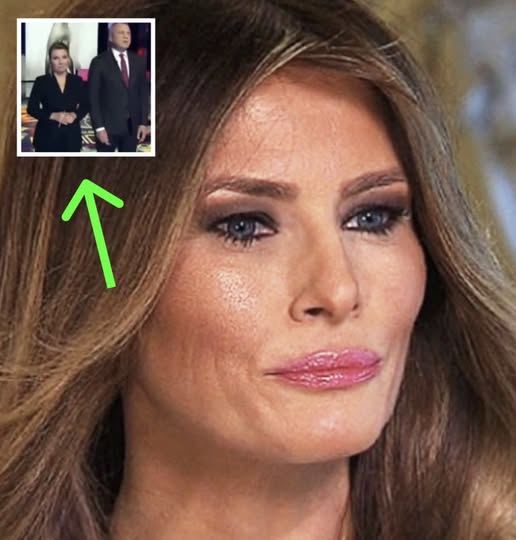A Farewell to a Country Pioneer
The stage lights have dimmed, the crowd’s cheers now only an echo in memory. For more than five decades, Johnny Rodriguez’s voice carried the heartache, grit, and storytelling spirit of country music—but with a sound and soul uniquely his own.

On May 9, 2025, fans around the world learned the heartbreaking news: Johnny Rodriguez, the first Mexican American country music star to break into the mainstream charts, had passed away at the age of 73. His daughter, Aubry Rodriguez, confirmed his death in a statement on social media. She did not share the cause, but her words made clear the depth of the loss: not just of a father, but of a man whose music shaped an era.
Rising from South Texas to Nashville’s Spotlight
Johnny Rodriguez’s journey to fame began far from the polished stages of the Grand Ole Opry. Born in Sabinal, Texas, in 1951, he grew up immersed in the sounds of both Mexican folk music and classic country. This blending of musical traditions would later become his hallmark—a smooth, emotional vocal style that seamlessly wove Spanish lyrics into traditional Nashville arrangements.

His break came in the early 1970s when country legend Tom T. Hall and singer Bobby Bare discovered him performing in Texas. Recognizing his talent and distinctive sound, they helped him secure a recording contract in Nashville.
Chart-Topping Hits and a Distinct Sound
Rodriguez’s career took off almost immediately. His 1973 hit “You Always Come Back (to Hurting Me)” reached No. 1 on the Billboard Hot Country Songs chart, marking the first time a Mexican American artist had achieved such success in country music.
Other hits followed in quick succession:
“Ridin’ My Thumb to Mexico” – A breezy yet heartfelt anthem that became one of his signature songs.
“I Just Can’t Get Her Out of My Mind” – A melodic confession of love and longing that showcased his smooth phrasing.
“That’s the Way Love Goes” – A ballad that cemented his status as a romantic storyteller.
Over the course of his career, Rodriguez scored six No. 1 singles and nine additional Top 10 hits, making him a consistent chart presence throughout the 1970s.
Breaking Barriers in Country Music
:max_bytes(150000):strip_icc():focal(818x261:820x263)/johnny-rodriguez-portrait-051025-91cda873173541769b5e7ccf2e7c1273.jpg)
At a time when country radio was dominated by white artists and traditional Southern themes, Johnny Rodriguez brought a fresh perspective. His Mexican American heritage was not something he concealed—it was woven into his music. From sprinkling Spanish verses into his songs to wearing his heritage proudly on stage, Rodriguez opened the door for future generations of Latino artists in the genre.
The Texas Country Music Hall of Fame would later describe him as the “greatest and most memorable Chicano country singer of all time.”
A Performer with Range and Heart

Fans remember Rodriguez not just for his studio recordings but for his electric live performances. Whether playing to a packed stadium or an intimate honky-tonk, he had a way of making the audience feel like he was singing directly to them.
His signature style—gentle yet powerful, romantic yet grounded—was inspired by his love for both George Jones and the mariachi music of his childhood. This combination gave his songs a timeless quality, allowing them to resonate across cultural and generational lines.
Personal Life and Resilience
img src="https://upload.wikimedia.org/wikipedia/commons/2/2b/Johnny_Rodriguez_press_photo--1976.jpg" style="width: 100%; margin: 10px 0px">
Rodriguez’s career, like many in the entertainment industry, had its ups and downs. He faced personal challenges, legal troubles, and shifting trends in country music. Yet, through it all, he continued to perform and connect with fans who never stopped requesting his classics.
At the time of his passing, his daughter confirmed that he was still married to Debbie McNeely, correcting earlier reports that suggested otherwise.
Influence on Future Generations
Johnny Rodriguez’s success carved out space for artists such as Freddy Fender, Rick Treviño, and contemporary stars like Kacey Musgraves—who have acknowledged the importance of diverse voices in the genre. His ability to bridge cultures through music was ahead of its time, and his trailblazing career remains a blueprint for aspiring artists from underrepresented backgrounds.
Rodriguez once said in an interview, “Music has no borders. If it’s honest, it speaks to everyone.” That philosophy is evident in the way his songs still connect with listeners today.
Remembering the Man Behind the Music
For many fans, Johnny Rodriguez’s music became part of the soundtrack to their lives—played at weddings, road trips, heartbreaks, and celebrations. His songs were more than melodies; they were stories, infused with lived experience and sung with authenticity.
Friends and collaborators recall his warmth off-stage, his deep laugh, and his unwavering commitment to his craft. Even in his later years, Rodriguez continued performing, often to sold-out crowds who knew every word to his hits.
A Legacy That Will Endure
Though Johnny Rodriguez is gone, his music will continue to play on jukeboxes, radio stations, and streaming playlists. His career not only left a mark on country music history but also reshaped its cultural landscape.
In remembering him, fans aren’t just saying goodbye to a performer—they’re honoring a pioneer who showed that country music could be enriched, not diminished, by embracing diversity.
His story is one of talent, perseverance, and the courage to be authentically oneself in an industry that wasn’t always ready for change. And in that way, Johnny Rodriguez will always be more than just a star—he will remain a symbol of possibility.
The stage lights have dimmed, the crowd’s cheers now only an echo in memory. For more than five decades, Johnny Rodriguez’s voice carried the heartache, grit, and storytelling spirit of country music—but with a sound and soul uniquely his own.

On May 9, 2025, fans around the world learned the heartbreaking news: Johnny Rodriguez, the first Mexican American country music star to break into the mainstream charts, had passed away at the age of 73. His daughter, Aubry Rodriguez, confirmed his death in a statement on social media. She did not share the cause, but her words made clear the depth of the loss: not just of a father, but of a man whose music shaped an era.
Rising from South Texas to Nashville’s Spotlight
Johnny Rodriguez’s journey to fame began far from the polished stages of the Grand Ole Opry. Born in Sabinal, Texas, in 1951, he grew up immersed in the sounds of both Mexican folk music and classic country. This blending of musical traditions would later become his hallmark—a smooth, emotional vocal style that seamlessly wove Spanish lyrics into traditional Nashville arrangements.

His break came in the early 1970s when country legend Tom T. Hall and singer Bobby Bare discovered him performing in Texas. Recognizing his talent and distinctive sound, they helped him secure a recording contract in Nashville.
Chart-Topping Hits and a Distinct Sound
Rodriguez’s career took off almost immediately. His 1973 hit “You Always Come Back (to Hurting Me)” reached No. 1 on the Billboard Hot Country Songs chart, marking the first time a Mexican American artist had achieved such success in country music.
Other hits followed in quick succession:
“Ridin’ My Thumb to Mexico” – A breezy yet heartfelt anthem that became one of his signature songs.
“I Just Can’t Get Her Out of My Mind” – A melodic confession of love and longing that showcased his smooth phrasing.
“That’s the Way Love Goes” – A ballad that cemented his status as a romantic storyteller.
Over the course of his career, Rodriguez scored six No. 1 singles and nine additional Top 10 hits, making him a consistent chart presence throughout the 1970s.
Breaking Barriers in Country Music
:max_bytes(150000):strip_icc():focal(818x261:820x263)/johnny-rodriguez-portrait-051025-91cda873173541769b5e7ccf2e7c1273.jpg)
At a time when country radio was dominated by white artists and traditional Southern themes, Johnny Rodriguez brought a fresh perspective. His Mexican American heritage was not something he concealed—it was woven into his music. From sprinkling Spanish verses into his songs to wearing his heritage proudly on stage, Rodriguez opened the door for future generations of Latino artists in the genre.
The Texas Country Music Hall of Fame would later describe him as the “greatest and most memorable Chicano country singer of all time.”
A Performer with Range and Heart

Fans remember Rodriguez not just for his studio recordings but for his electric live performances. Whether playing to a packed stadium or an intimate honky-tonk, he had a way of making the audience feel like he was singing directly to them.
His signature style—gentle yet powerful, romantic yet grounded—was inspired by his love for both George Jones and the mariachi music of his childhood. This combination gave his songs a timeless quality, allowing them to resonate across cultural and generational lines.
Personal Life and Resilience
img src="https://upload.wikimedia.org/wikipedia/commons/2/2b/Johnny_Rodriguez_press_photo--1976.jpg" style="width: 100%; margin: 10px 0px">
Rodriguez’s career, like many in the entertainment industry, had its ups and downs. He faced personal challenges, legal troubles, and shifting trends in country music. Yet, through it all, he continued to perform and connect with fans who never stopped requesting his classics.
At the time of his passing, his daughter confirmed that he was still married to Debbie McNeely, correcting earlier reports that suggested otherwise.
Influence on Future Generations
Johnny Rodriguez’s success carved out space for artists such as Freddy Fender, Rick Treviño, and contemporary stars like Kacey Musgraves—who have acknowledged the importance of diverse voices in the genre. His ability to bridge cultures through music was ahead of its time, and his trailblazing career remains a blueprint for aspiring artists from underrepresented backgrounds.
Rodriguez once said in an interview, “Music has no borders. If it’s honest, it speaks to everyone.” That philosophy is evident in the way his songs still connect with listeners today.
Remembering the Man Behind the Music
For many fans, Johnny Rodriguez’s music became part of the soundtrack to their lives—played at weddings, road trips, heartbreaks, and celebrations. His songs were more than melodies; they were stories, infused with lived experience and sung with authenticity.
Friends and collaborators recall his warmth off-stage, his deep laugh, and his unwavering commitment to his craft. Even in his later years, Rodriguez continued performing, often to sold-out crowds who knew every word to his hits.
A Legacy That Will Endure
Though Johnny Rodriguez is gone, his music will continue to play on jukeboxes, radio stations, and streaming playlists. His career not only left a mark on country music history but also reshaped its cultural landscape.
In remembering him, fans aren’t just saying goodbye to a performer—they’re honoring a pioneer who showed that country music could be enriched, not diminished, by embracing diversity.
His story is one of talent, perseverance, and the courage to be authentically oneself in an industry that wasn’t always ready for change. And in that way, Johnny Rodriguez will always be more than just a star—he will remain a symbol of possibility.
It might feel harmless: you’re tired, it’s late, and skipping your toothbrush for one night seems like no big deal. But that simple choice can quietly set off a chain of events inside your body that you may not notice until it’s too late.
When you fall asleep without brushing, millions of bacteria in your mouth start feeding on leftover food particles and sugars. Overnight, without the natural cleansing power of saliva (which decreases during sleep), those bacteria multiply, releasing acids that erode enamel, inflame gums, and create the perfect conditions for infection.
Dentists warn that this habit doesn’t just cause cavities or bad breath. Left unchecked, it has been linked to serious health risks such as heart disease, stroke, diabetes complications, and respiratory infections. In other words, skipping nighttime brushing isn’t just a lazy choice—it’s a dangerous gamble with your long-term health.
Cavities and Tooth Decay: The First Domino to Fall
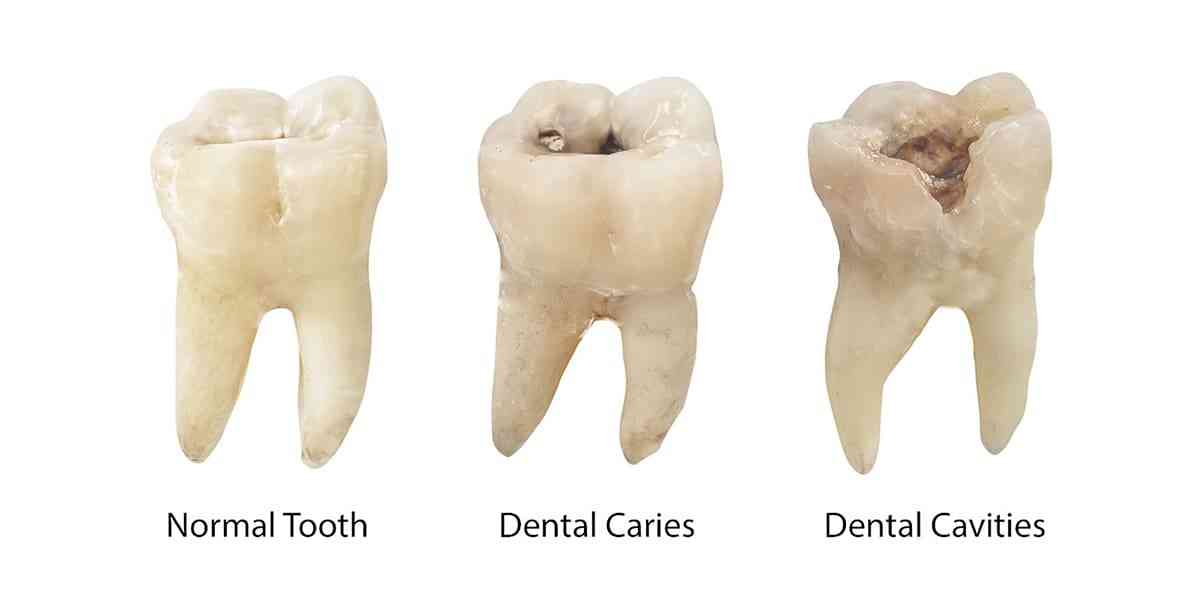
When you skip brushing, bacteria feast on food debris left behind. As they consume sugars, they produce acids strong enough to wear away enamel, the hard outer shell of your teeth. Once enamel is weakened, cavities begin to form.
At first, cavities may be small and painless. But over time, untreated decay can spread deeper into the tooth, reaching the pulp and nerves. This can lead to infections that may require complex dental procedures like root canals or even extractions.
What began as “just one night” of neglect can snowball into costly, painful consequences that affect your ability to eat, speak, and smile with confidence.
Gum Disease: The Hidden Threat
Plaque, the sticky film of bacteria that forms on your teeth, doesn’t just threaten enamel. When it builds up along the gumline, it irritates the delicate tissue, leading to gingivitis. This early stage of gum disease is often marked by red, swollen gums that bleed easily.
But if nightly brushing is skipped repeatedly, gingivitis can progress to periodontitis, a severe infection that damages not only the gums but also the bone supporting your teeth. Periodontitis can cause teeth to loosen and eventually fall out.
Even scarier, gum disease has been strongly linked to broader systemic conditions. Bacteria from inflamed gums can enter the bloodstream, triggering inflammation throughout the body and contributing to cardiovascular problems.
Tartar Buildup and Stains

Plaque doesn’t stay soft forever. Within just a couple of days, it can harden into tartar, a calcified deposit that clings stubbornly to teeth and gums. Unlike plaque, tartar cannot be removed by brushing or flossing—it requires professional cleaning by a dentist or hygienist.
Tartar isn’t only unsightly, causing yellow or brown stains, but it also acts as a rough surface that attracts even more plaque, accelerating the cycle of infection. If you’ve ever noticed your teeth looking discolored despite brushing in the morning, chances are plaque hardened overnight while you skipped your nighttime routine.
Bad Breath: More Than Just Morning Breath
We all wake up with “morning breath,” but skipping brushing makes it significantly worse. During sleep, reduced saliva flow already allows bacteria to thrive. If you don’t brush before bed, bacteria break down leftover food and produce sulfur compounds that cause a strong, unpleasant odor.
Over time, this can evolve into chronic halitosis, a condition that simple mints or mouthwash won’t fix. Bad breath not only affects confidence in social and professional settings but also signals deeper oral health issues that shouldn’t be ignored.
The Dangerous Link to Overall Health

Perhaps the most alarming consequence of skipping nighttime brushing is its connection to diseases beyond the mouth. Scientific studies have shown that oral infections and gum disease can significantly increase the risk of:
Heart disease: Bacteria from the mouth can travel through the bloodstream, contributing to artery inflammation and blockages.
Stroke: Inflammation triggered by oral bacteria has been associated with higher stroke risk.
Diabetes complications: Gum disease can make it harder for people with diabetes to control blood sugar, worsening the condition.
Respiratory infections: Inhaling bacteria from infected gums and teeth can lead to lung problems, particularly in vulnerable individuals.
In short, when you skip brushing before bed, you’re not just risking your teeth—you’re opening the door to health issues that can shorten your life.
Why Nighttime Brushing Is Non-Negotiable
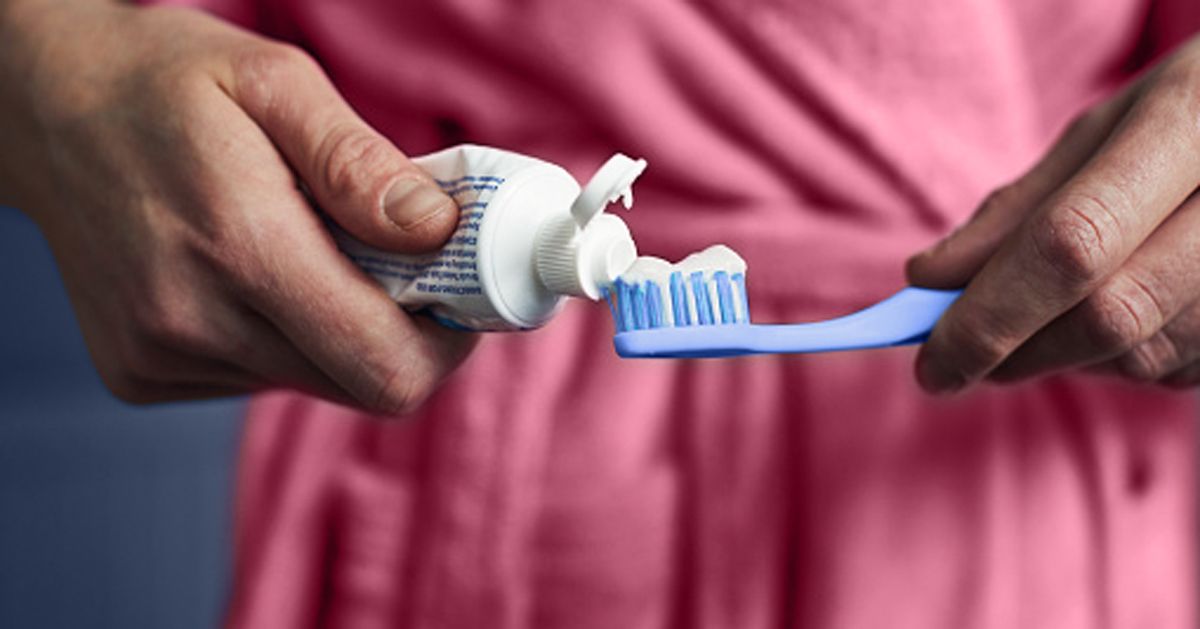
Brushing in the morning is important, but brushing at night is essential. Here’s why:
Saliva protection drops: Saliva, which helps rinse bacteria and neutralize acids, decreases during sleep. Without brushing, bacteria thrive unchecked.
Long exposure time: If you eat dinner at 7 PM and don’t brush before bed, your teeth are coated in bacteria and acids until 7 AM or later—that’s 12 hours of damage.
Preventing irreversible harm: Enamel erosion, gum recession, and bone loss are permanent. Brushing at night prevents these changes before they happen.
Think of nighttime brushing as your body’s “final defense” before a long period of vulnerability.
Building a Nightly Routine That Sticks
Skipping brushing often comes down to fatigue or forgetfulness. Here are ways to make it easier:
Brush earlier in the evening: You don’t have to wait until right before bed. Brushing after dinner is just as effective.
Set a reminder: Use a phone alarm to nudge you at the same time every night.
Make it enjoyable: Play your favorite two-minute song while brushing.
Keep supplies nearby: Store a toothbrush in your bedroom or keep a travel kit handy for those nights when exhaustion wins.
Beyond Brushing: Flossing and Rinsing

For maximum protection, brushing isn’t enough on its own. Food particles and bacteria hide between teeth where brushes can’t reach. Flossing removes this buildup and prevents plaque from hardening into tartar.
An alcohol-free antimicrobial mouthwash can also reduce bacteria and freshen breath. Combined with nightly brushing, these habits create a strong defense against both dental decay and gum disease.
The Cost of Neglect vs. The Price of Prevention
Consider this: brushing your teeth takes only two minutes. In contrast, the cost of neglect can include:
Hundreds (or thousands) of dollars in fillings, root canals, crowns, or implants.
Pain, inconvenience, and time lost from work due to dental visits.
Emotional toll from chronic bad breath, tooth loss, or visible gum problems.
When compared side by side, the tiny effort of nightly brushing is one of the best health investments you can make.
Conclusion: Two Minutes That Could Save Your Health
Sleeping without brushing your teeth may feel like a small mistake, but it can unleash a cascade of problems—from cavities and gum disease to systemic illnesses like heart disease and diabetes. The dangers build silently, often without pain, until the damage is irreversible.
The truth is simple: brushing at night is not optional. It’s a vital safeguard for your mouth, your confidence, and your overall health. Two minutes each night can protect you from years of regret, pain, and medical complications.
So the next time exhaustion tempts you to skip your toothbrush, remember: those two minutes could save your teeth—and maybe even your life.
When you fall asleep without brushing, millions of bacteria in your mouth start feeding on leftover food particles and sugars. Overnight, without the natural cleansing power of saliva (which decreases during sleep), those bacteria multiply, releasing acids that erode enamel, inflame gums, and create the perfect conditions for infection.
Dentists warn that this habit doesn’t just cause cavities or bad breath. Left unchecked, it has been linked to serious health risks such as heart disease, stroke, diabetes complications, and respiratory infections. In other words, skipping nighttime brushing isn’t just a lazy choice—it’s a dangerous gamble with your long-term health.
Cavities and Tooth Decay: The First Domino to Fall

When you skip brushing, bacteria feast on food debris left behind. As they consume sugars, they produce acids strong enough to wear away enamel, the hard outer shell of your teeth. Once enamel is weakened, cavities begin to form.
At first, cavities may be small and painless. But over time, untreated decay can spread deeper into the tooth, reaching the pulp and nerves. This can lead to infections that may require complex dental procedures like root canals or even extractions.
What began as “just one night” of neglect can snowball into costly, painful consequences that affect your ability to eat, speak, and smile with confidence.
Gum Disease: The Hidden Threat
Plaque, the sticky film of bacteria that forms on your teeth, doesn’t just threaten enamel. When it builds up along the gumline, it irritates the delicate tissue, leading to gingivitis. This early stage of gum disease is often marked by red, swollen gums that bleed easily.
But if nightly brushing is skipped repeatedly, gingivitis can progress to periodontitis, a severe infection that damages not only the gums but also the bone supporting your teeth. Periodontitis can cause teeth to loosen and eventually fall out.
Even scarier, gum disease has been strongly linked to broader systemic conditions. Bacteria from inflamed gums can enter the bloodstream, triggering inflammation throughout the body and contributing to cardiovascular problems.
Tartar Buildup and Stains

Plaque doesn’t stay soft forever. Within just a couple of days, it can harden into tartar, a calcified deposit that clings stubbornly to teeth and gums. Unlike plaque, tartar cannot be removed by brushing or flossing—it requires professional cleaning by a dentist or hygienist.
Tartar isn’t only unsightly, causing yellow or brown stains, but it also acts as a rough surface that attracts even more plaque, accelerating the cycle of infection. If you’ve ever noticed your teeth looking discolored despite brushing in the morning, chances are plaque hardened overnight while you skipped your nighttime routine.
Bad Breath: More Than Just Morning Breath
We all wake up with “morning breath,” but skipping brushing makes it significantly worse. During sleep, reduced saliva flow already allows bacteria to thrive. If you don’t brush before bed, bacteria break down leftover food and produce sulfur compounds that cause a strong, unpleasant odor.
Over time, this can evolve into chronic halitosis, a condition that simple mints or mouthwash won’t fix. Bad breath not only affects confidence in social and professional settings but also signals deeper oral health issues that shouldn’t be ignored.
The Dangerous Link to Overall Health

Perhaps the most alarming consequence of skipping nighttime brushing is its connection to diseases beyond the mouth. Scientific studies have shown that oral infections and gum disease can significantly increase the risk of:
Heart disease: Bacteria from the mouth can travel through the bloodstream, contributing to artery inflammation and blockages.
Stroke: Inflammation triggered by oral bacteria has been associated with higher stroke risk.
Diabetes complications: Gum disease can make it harder for people with diabetes to control blood sugar, worsening the condition.
Respiratory infections: Inhaling bacteria from infected gums and teeth can lead to lung problems, particularly in vulnerable individuals.
In short, when you skip brushing before bed, you’re not just risking your teeth—you’re opening the door to health issues that can shorten your life.
Why Nighttime Brushing Is Non-Negotiable

Brushing in the morning is important, but brushing at night is essential. Here’s why:
Saliva protection drops: Saliva, which helps rinse bacteria and neutralize acids, decreases during sleep. Without brushing, bacteria thrive unchecked.
Long exposure time: If you eat dinner at 7 PM and don’t brush before bed, your teeth are coated in bacteria and acids until 7 AM or later—that’s 12 hours of damage.
Preventing irreversible harm: Enamel erosion, gum recession, and bone loss are permanent. Brushing at night prevents these changes before they happen.
Think of nighttime brushing as your body’s “final defense” before a long period of vulnerability.
Building a Nightly Routine That Sticks
Skipping brushing often comes down to fatigue or forgetfulness. Here are ways to make it easier:
Brush earlier in the evening: You don’t have to wait until right before bed. Brushing after dinner is just as effective.
Set a reminder: Use a phone alarm to nudge you at the same time every night.
Make it enjoyable: Play your favorite two-minute song while brushing.
Keep supplies nearby: Store a toothbrush in your bedroom or keep a travel kit handy for those nights when exhaustion wins.
Beyond Brushing: Flossing and Rinsing

For maximum protection, brushing isn’t enough on its own. Food particles and bacteria hide between teeth where brushes can’t reach. Flossing removes this buildup and prevents plaque from hardening into tartar.
An alcohol-free antimicrobial mouthwash can also reduce bacteria and freshen breath. Combined with nightly brushing, these habits create a strong defense against both dental decay and gum disease.
The Cost of Neglect vs. The Price of Prevention
Consider this: brushing your teeth takes only two minutes. In contrast, the cost of neglect can include:
Hundreds (or thousands) of dollars in fillings, root canals, crowns, or implants.
Pain, inconvenience, and time lost from work due to dental visits.
Emotional toll from chronic bad breath, tooth loss, or visible gum problems.
When compared side by side, the tiny effort of nightly brushing is one of the best health investments you can make.
Conclusion: Two Minutes That Could Save Your Health
Sleeping without brushing your teeth may feel like a small mistake, but it can unleash a cascade of problems—from cavities and gum disease to systemic illnesses like heart disease and diabetes. The dangers build silently, often without pain, until the damage is irreversible.
The truth is simple: brushing at night is not optional. It’s a vital safeguard for your mouth, your confidence, and your overall health. Two minutes each night can protect you from years of regret, pain, and medical complications.
So the next time exhaustion tempts you to skip your toothbrush, remember: those two minutes could save your teeth—and maybe even your life.

Death is a mysterious and often unsettling subject for many people. Throughout history, humans have tried to understand and anticipate the end of life. Surprisingly, there is some scientific research suggests that our sense of smell may hold the key to unlocking the secrets of approaching death. It turns out that our nose has the uncanny ability to leave clues as to when death may occur, both in terms of being able to smell when someone else’s death is near, as well as the loss of smell as a predictor of our own future health.
Smelling Death: A Sixth Sense?

One intriguing aspect of our sense of smell is its potential to detect the approach of death in others. Many anecdotal stories have been shared about individuals who claimed to have experienced a certain smell prior to the death of a loved one. These experiences hint at the existence of a mysterious sixth sense, specifically tied to our olfactory system.
Several theories attempt to explain this phenomenon. One explanation suggests that as the body approaches death, it produces particular chemicals or odors that are imperceptible to most people but which some individuals with heightened olfactory senses can detect. Another theory claims that the sense of smell may be linked to subtle shifts in our emotional state, allowing us to pick up on the imminent loss of a loved one. It’s not so much that we realize that we are smelling death, but rather that, thanks to our olfactory glands, we begin to sense that it is near.
While scientific evidence in this area is limited, few interesting studies have been conducted. One study conducted by scientists at the University of Chicago found that animals, such as dogs or even cats, are able to detect chemical changes in individuals with certain medical conditions, including cancer. Similarly, it is possible that humans, with a heightened sense of smell, may also have the ability to sense imminent death. There are even examples of animals who live in hospitals and long term care facilities who almost always accurately predict when a patient or resident is going to pass away.
Loss of Smell: A Predictor of Future Health
Alongside the ability to smell the approach of death in others, the loss of smell in oneself may also serve as a predictor of future health. Several scientific studies have indicated that a decline in olfactory function may be associated with certain health conditions, including neurodegenerative diseases like Parkinson’s and Alzheimer’s. It can also be a signal of respiratory and cardiovascular problems. (4)
Research has shown that the olfactory system often deteriorates before other symptoms of these diseases become apparent. This suggests that a loss of smell could serve as an early warning sign, helping individuals and healthcare professionals identify potential health issues and intervene at an early stage.
In fact, a study published in the Journal of the American Geriatrics Society found that elderly individuals with a diminished sense of smell were more likely to die within five years compared to those with a healthy sense of smell. This suggests that the loss of smell could be an important indicator of overall health and mortality risk, offering valuable insights and opportunities for preventive care.
The Future of Smell-Based Predictions

As our understanding of the human body continues to advance, we are discovering new connections and insights into how various systems and senses interact. The olfactory system, often overlooked in comparison to other senses like sight and hearing, seems to hold great potential in predicting both the approach of death in others and the anticipation of future health outcomes. Further research is needed to validate these intriguing findings. Scientists are actively exploring the chemical changes occurring in the body before death, as well as the impact of olfactory dysfunction on overall health and mortality risk. With an improved understanding, it may be possible to develop diagnostic tools that harness the power of smell, providing individuals with timely and potentially life-saving interventions.
The Nose Knows?

The notion that “the body knows when death is near, and it begins in your nose” is a fascinating area of study. The ability to smell death in others and the loss of smell as a predictor of future health opens up new avenues of research and understanding in the fields of medicine and human biology. By exploring and harnessing the power of our sense of smell, we may unlock valuable insights into life and death, ultimately improving the quality of our well-being.
Understanding End-of-Life Symptoms in Older Adults
Recognizing the signs and symptoms of the end-of-life stage is essential for caregivers and family members to provide appropriate physical, emotional, and spiritual support. This understanding can ease anxiety, promote meaningful moments, and ensure comfort during this profound transition.
Becoming familiar with end-of-life symptoms in older adults can help you better understand what your loved one may be experiencing and create a smoother, more compassionate transition for everyone involved.
Caring for a loved one during their final stage of life is deeply challenging. Whether you’re taking on full responsibility or simply offering support, it’s natural to wonder what to expect. Understanding the physical, emotional, and psychological changes that occur can help you provide comfort and reassurance during this profound time.
End-of-Life Symptoms Timeline
Every individual’s journey is unique, and not all end-of-life signs will appear in the same order or with the same intensity. This timeline serves as a general guide, and the experience may vary significantly from person to person. Additionally, the pace of progression can vary significantly. Some people may show clear physical symptoms, while others experience more subtle changes. Below is a general timeline of what you might observe in the weeks, days, and hours leading up to the end of life.
Weeks Before End of Life
In the weeks leading up to the end of life, your loved one may begin to show signs of withdrawal from daily life. These signs are often emotional as well as physical.
Emotional Changes:
A sense of resignation or detachment from the world.
Low mood, lack of motivation, and a reduced interest in hobbies or social activities.
Increased focus on reminiscing about childhood or past experiences.
Physical Changes:
Loss of appetite and decreased interest in food.
Noticeable weight loss and frailty.
Increased weakness and fatigue.
It’s important to offer gentle support during this time. Don’t force them to eat or engage in activities they’re not interested in. Provide a calm and peaceful environment where they feel secure.
Days Before End of Life
As the end draws nearer, the changes become more pronounced. Your loved one may spend most of their time sleeping and may become unresponsive during waking hours.
Physical Signs:
Increased periods of sleep.
Reduced movement and limited ability to respond to conversations or touch.
Labored breathing or changes in breathing patterns.
Difficulty swallowing or refusing food and water.
Lack of bowel movements or urination.
Emotional and Cognitive Signs:
Hallucinations, illusions, or delusions.
Increased confusion and disorientation.
Restlessness or sudden bursts of energy.
Continue speaking to your loved one calmly and lovingly, even if they don’t respond. It’s believed that hearing remains intact until the very end.
Hours Before End of Life
In the final hours, the body begins to shut down, and vital functions slow significantly.
Physical Signs:
Irregular breathing, including periods of apnea (pauses in breathing).
Noisy breathing or a “death rattle” due to fluid buildup in the throat.
Glassy, unfocused eyes.
Cold extremities and changes in skin color, such as mottling.
Weak or undetectable pulse.
Emotional Signs:
Sudden moments of clarity or brief awakenings.
Changes in consciousness, including delirium or unresponsiveness.
Family members and caregivers should focus on creating a calm, loving atmosphere during this time. Hold their hand, speak softly, and offer words of comfort.
At the Moment of Death
When death occurs, the body fully relaxes, and all vital signs stop.
Signs of Death:
Absence of breathing.
No detectable pulse or heartbeat.
Pupils dilate and become unresponsive to light.
Skin appears pale and waxy.
Possible small reflexive movements or tears.
After death, take a moment to sit with your loved one, reflect, and say goodbye. Allow yourself time to process your emotions without judgment. You might find comfort in speaking with close friends or family members, reaching out to a grief counselor, or exploring support groups for bereavement. Practical tasks such as notifying loved ones, arranging care for the body, and beginning funeral arrangements can also provide a sense of focus during this challenging time. Grief is a personal journey, and it’s okay to experience a range of emotions.
Common End-of-Life Symptoms Explained
Below are more detailed explanations of common end-of-life symptoms and how you can respond to them with care and compassion.
1. Appetite and Digestive Changes
As the body prepares to shut down, metabolism slows significantly. This leads to reduced hunger and thirst.
What to Expect:
Reduced appetite and interest in food.
Difficulty swallowing.
Nausea or constipation.
How to Help:
Offer small portions of their favorite foods.
Provide ice chips or a moist cloth to keep lips hydrated.
Avoid forcing food or drink.
2. Increased Sleeping
Fatigue and weakness increase significantly in the final weeks and days.
What to Expect:
Extended periods of sleep.
Difficulty waking them.
How to Help:
Allow them to sleep as much as they need.
Speak softly and provide gentle physical touch.
3. Withdrawal from the World
Emotional detachment is common.
What to Expect:
Decreased interest in social activities.
Increased focus on memories or inner reflection.
How to Help:
Be present without pressuring them to engage.
Provide a peaceful environment.
4. Anxiety and Depression
Emotional distress can manifest as anxiety or depression. Caregivers may find it helpful to seek professional support from therapists, grief counselors, or support groups specializing in end-of-life care. Many hospice organizations also offer counseling services and resources for both patients and caregivers. Taking time for self-care, setting boundaries, and finding moments for rest and reflection are essential for maintaining emotional well-being during this challenging period.
What to Expect:
Fear or worry about the unknown.
Sadness or regret.
How to Help:
Encourage open conversations.
Offer reassurance and comfort.
5. Urinary and Bowel Incontinence
Muscle control diminishes.
What to Expect:
Reduced urine output.
Loss of bowel control.
How to Help:
Use incontinence products.
Keep the area clean and dry.
6. Changing Vital Signs
Blood pressure, heart rate, and temperature drop.
What to Expect:
Cool extremities.
Mottled skin.
How to Help:
Keep them warm with blankets.
Avoid overheating.
7. Confusion
Cognitive decline is common.
What to Expect:
Disorientation.
Talking to unseen individuals.
How to Help:
Stay calm and reassuring.
Avoid correcting them.
8. Sensory Changes
Vision and hearing may change.
What to Expect:
Hallucinations.
Talking to people who aren’t there.
How to Help:
Let them share their experiences without dismissing them.
9. Saying Goodbye
Some people express a desire to tie up loose ends.
What to Expect:
Final conversations.
Funeral planning.
How to Help:
Support their wishes.
Listen with compassion.
10. Breathing Changes
Breathing slows and becomes irregular.
What to Expect:
Shallow breaths.
Noisy breathing.
How to Help:
Keep them elevated.
Use a humidifier.
11. Loss of Consciousness
Awareness fades.
What to Expect:
Unresponsiveness.
Glassy eyes.
How to Help:
Continue speaking softly.
Hold their hand.
Providing Comfort and Support
End-of-life care is a sacred time. Providing compassion, patience, and presence will not only comfort your loved one but also bring peace to you in this final chapter of their life.
Physical Comfort:
Use a humidifier.
Keep lips and skin hydrated.
Adjust their position frequently.
Emotional Comfort:
Speak gently.
Play calming music.
Avoid dismissing their thoughts.
Spiritual Comfort:
Consider involving a spiritual advisor.
Respect their beliefs and rituals.
End-of-life care is a sacred and deeply emotional experience, marking a profound chapter in the lives of both the person passing and their caregivers. This period is often filled with a mix of sorrow, love, reflection, and even moments of peace. As caregivers, the emotional and physical demands can be immense, making it essential to recognize the importance of self-care and support systems.
Caring for someone in their final days is not just about physical assistance—it’s about creating an environment filled with dignity, respect, and love. Simple acts, such as holding their hand, speaking softly, or playing their favorite music, can bring immense comfort. These seemingly small gestures have a profound impact, not just on the person at the end of life but also on those providing care.
Self-care for caregivers is not indulgent; it’s a necessity. Burnout, fatigue, and emotional overwhelm are real risks during this time. Taking regular breaks, seeking help from friends, family, or professional caregivers, and allowing time for personal reflection are all vital steps in maintaining strength and resilience. Support groups, grief counselors, and hospice services can offer additional guidance and emotional support.
The grief that follows loss is a deeply personal journey, and it doesn’t adhere to a set timeline. It’s okay to feel a wide range of emotions—anger, guilt, sadness, relief, or even numbness. These feelings are all valid, and allowing yourself to process them without judgment is crucial for healing.
As you navigate this journey, remember that the love, patience, and care you’ve provided are invaluable. You’ve offered your loved one a gift beyond measure: presence, compassion, and dignity in their final moments. In the end, the memories of these shared moments, no matter how challenging, often become treasured reflections of love and connection.
End-of-life care isn’t just about managing symptoms; it’s about honoring the individual, their legacy, and the relationships they’ve built. By balancing care for your loved one with care for yourself, you can find moments of peace amidst the sorrow, knowing that your presence made a meaningful difference in their final chapter.
Bath towels are essential in every household, yet most people rarely consider the intricate details involved in making them.
One such detail is the patterns often woven into the surface of bath towels.
While these lines might seem purely decorative at first, they actually serve important purposes that enhance the towel’s durability and functionality.
Understanding the role of these lines can deepen one’s appreciation for the craftsmanship involved in towel making.
The Function of Lines in Bath Towel Design
The lines chosen by designers for bath towels serve more than just aesthetic purposes. They often result from deliberate weaving techniques that offer multiple benefits.
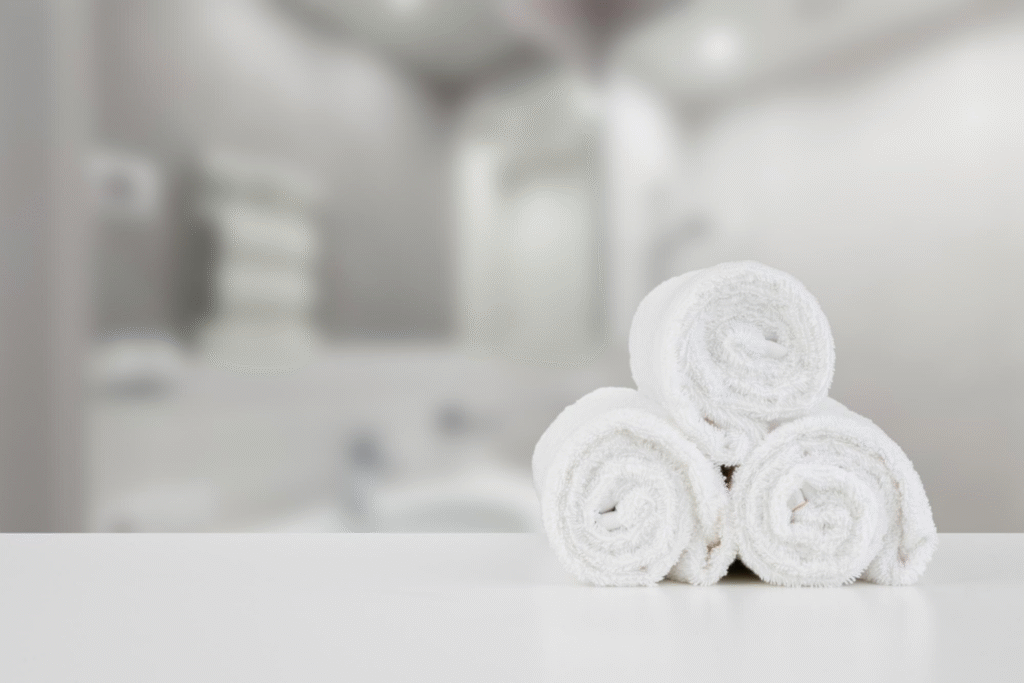
These lines help enhance the towel’s absorbency, preserve its strength, and even improve its texture.
The Most Important Functions of Lines on Bath Towels
One of the primary functions of the lines on bath towels is to improve their absorbency.
These lines are often created through a weaving technique that increases the towel’s surface area, allowing it to soak up more water. They also form channels that promote airflow, which helps the towel dry faster.
The lines also help the towel maintain its shape and appearance over time, while providing a helpful guide for folding and hanging.
The Importance of Tread Lines for Towel Longevity
Certain towels feature raised lines known as tread lines, which play a vital role in extending the towel’s durability. These lines are typically woven into the fabric to reinforce its structure, preventing fraying and maintaining its shape after many washes and uses.
Tread lines also help preserve the towel’s thickness and softness, contributing to a longer lifespan.
Understanding Dobby Weave and Its Impact on Towel Structure
The dobby weave is a common technique used in towel making, recognizable by its small geometric patterns.
This weaving method often creates the lines seen on many towels and helps preserve their overall structure.
Thanks to the tight and sturdy fabric produced by the dobby weave, towels retain their original shape even after extended use, resisting stretching and distortion.
The Benefits of Dobby Borders in Towels
The decorative bands often found at the ends of towels are known as dobby borders. Beyond their visual appeal, they serve a functional purpose.
Typically woven more densely than the rest of the towel, these borders reinforce the edges and prevent them from fraying.
Acting like a frame, the dobby border enhances the towel’s overall durability and helps maintain its integrity.
Wrapping Up: The Art Behind Bath Towels
In summary, the lines on bath towels are far more than decorative touches. They result from complex weaving techniques that enhance the towel’s durability, absorbency, and appearance.
Understanding the purpose behind these lines allows us to truly appreciate the craftsmanship involved in creating a quality bath towel.
Next time you grab a towel, take a moment to consider the subtle details that make it such an essential and long-lasting part of daily life.
One such detail is the patterns often woven into the surface of bath towels.
While these lines might seem purely decorative at first, they actually serve important purposes that enhance the towel’s durability and functionality.
Understanding the role of these lines can deepen one’s appreciation for the craftsmanship involved in towel making.
The Function of Lines in Bath Towel Design
The lines chosen by designers for bath towels serve more than just aesthetic purposes. They often result from deliberate weaving techniques that offer multiple benefits.

These lines help enhance the towel’s absorbency, preserve its strength, and even improve its texture.
The Most Important Functions of Lines on Bath Towels
One of the primary functions of the lines on bath towels is to improve their absorbency.
These lines are often created through a weaving technique that increases the towel’s surface area, allowing it to soak up more water. They also form channels that promote airflow, which helps the towel dry faster.
The lines also help the towel maintain its shape and appearance over time, while providing a helpful guide for folding and hanging.
The Importance of Tread Lines for Towel Longevity
Certain towels feature raised lines known as tread lines, which play a vital role in extending the towel’s durability. These lines are typically woven into the fabric to reinforce its structure, preventing fraying and maintaining its shape after many washes and uses.
Tread lines also help preserve the towel’s thickness and softness, contributing to a longer lifespan.
Understanding Dobby Weave and Its Impact on Towel Structure
The dobby weave is a common technique used in towel making, recognizable by its small geometric patterns.
This weaving method often creates the lines seen on many towels and helps preserve their overall structure.
Thanks to the tight and sturdy fabric produced by the dobby weave, towels retain their original shape even after extended use, resisting stretching and distortion.
The Benefits of Dobby Borders in Towels
The decorative bands often found at the ends of towels are known as dobby borders. Beyond their visual appeal, they serve a functional purpose.
Typically woven more densely than the rest of the towel, these borders reinforce the edges and prevent them from fraying.
Acting like a frame, the dobby border enhances the towel’s overall durability and helps maintain its integrity.
Wrapping Up: The Art Behind Bath Towels
In summary, the lines on bath towels are far more than decorative touches. They result from complex weaving techniques that enhance the towel’s durability, absorbency, and appearance.
Understanding the purpose behind these lines allows us to truly appreciate the craftsmanship involved in creating a quality bath towel.
Next time you grab a towel, take a moment to consider the subtle details that make it such an essential and long-lasting part of daily life.

Before she became the poised First Lady of the United States, Melania Trump lived a life wrapped in quiet mystery – one that includes a few carefully guarded romances. But few knew who they were. Until now.
Born Melanija Knavs in the tiny Slovenian town of Sevnica, Melania’s journey to global recognition is anything but ordinary. Long before her marriage to Donald Trump in 2005, she worked tirelessly to build a modeling career that took her from the streets of Ljubljana to Paris, Milan, and ultimately, New York City.
Melania meets Trump
Melania and the future president first crossed paths in 1998 at a Fashion Week party at the Kit Kat Club in Manhattan, hosted by Italian businessman Paolo Zampolli, who had signed her to his modeling agency, ID Model Management.
Despite Trump arriving at the party with a date, he was reportedly captivated by Melania and asked for her number.
But, according to her best friend Edit Molnar, the model was “turned off” by the real estate mogul and dating him was “absolutely out of the question.”
“Melania said, ‘He’s here with a woman. I am absolutely not giving him my number,’” Molnar told the New York Post about the conversation he had with his friend, who he described as a “homebody.” “She wouldn’t even consider it. Donald did all the work.”
‘Not a party girl’
Zampolli, who now serves as a U.S. Ambassador for Global Partnerships, added: “She never dated anyone in New York before Donald. She only went to movies by herself and to the gym.
“This is a woman who modeled for Camel cigarettes on a huge billboard in Times Square but stayed home all the time,” Zampolli said. “She was not a party girl.”
In January 2005, Melania married Donald in a lavish ceremony at Mar-a-Lago in Palm Beach, Florida, and the couple welcomed their first child, Barron, the following year in 2006.
But before Donald, who were the men that caught Melania’s eye?

One of the first men publicly linked to the former Sports Illustrated model is Peter Butoln, who claimed to be her teenage boyfriend during her school years in Slovenia.
“It was my first love. My first real love,” Butoln said in an interview with Inside Edition.
They reportedly met when Melania moved to Ljubljana at 17 to attend design school, Butoln shared, explaining that when he first saw her in the city center, he was instantly smitten.
“I saw her in a crowd of girls, and she was the most beautiful girl,” he said.
Their romance ended when he left for military service, and their final contact came in 1987, when Melania sent him a postcard that read: “I send you this postcard with nice warm regards from the seaside.”
However, a spokesperson for the FLOTUS later dismissed his claims, stating that Butoln was never her official boyfriend.
Another name tied to Melania’s past is Jure Zorcic, who met the now First Lady in 1991. According to Zorcic, he was riding his motorcycle when he spotted her walking and turned around to speak to her. “I had a moment and thought, ‘Wow, who is this girl? She is so beautiful,’” he recalled to ABC News.
“We met each other like in a movie,” said Zorcic. “I was on my motorbike, and she has been walking down a street. As I passed by her, I had a moment and thought, ‘Wow, who is this girl? She is so beautiful, I must turn back and follow her.’”
After sharing a coffee and a chat, Zorcic explained that the two dated for several months and vacationed with friends along the Croatian coast.
Years later, she left Slovenia to model in Milan and Paris.
“It was a bit of shock when I met her,” he told ABC. “She is very special, that’s the truth.”
In 2000, they unexpectedly bumped into each other in New York, and Melania greeted her former flame in English.
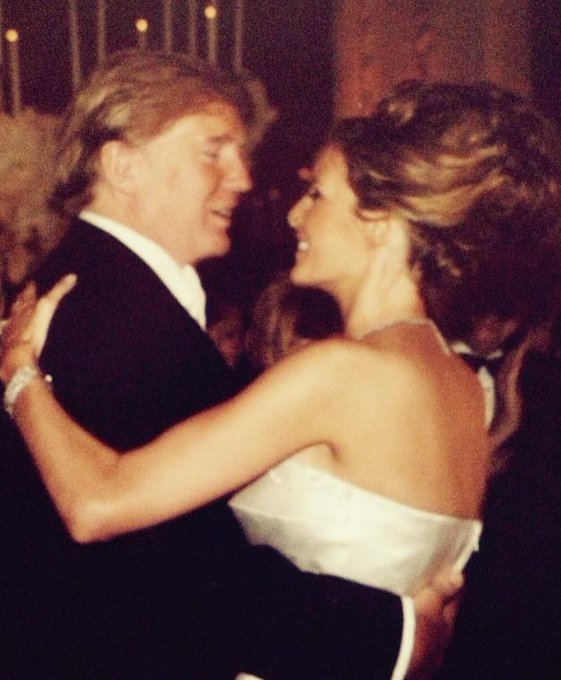
“I asked her: Did you forget that you are Slovenian?” he recalled. She told him she was living between New York and Florida and that “she would never go back to Slovenia.”
Of her eventual marriage to Donald, Zorcic mused: “I think her marriage to Trump was fate. Nobody believed 20 years ago that she would live at the top of the world, on Fifth Avenue in Trump Tower – even her!”
Slovenian roots to Fifth Avenue royalty
After meeting Trump in 1998, her life shifted from the quiet routines of modeling to the glare of the public spotlight.
While the billionaire real estate mogul was already a household name, Melania remained calm under the attention their relationship drew. In her early interviews, she didn’t shy away from expressing admiration for him – both as a partner and a potential leader.
“He would be a great president,” she said confidently in a 1999 interview with ABC News. “He’s very smart…He knows how to do a business. He would be a great leader.”
At the time, Trump was only toying with the idea of a presidential run, but Melania was already convinced of his potential, ready to prove she was more than “just his pretty possession.”
Before sharing this story with your friends, please let us know what you think of Melania Trump!
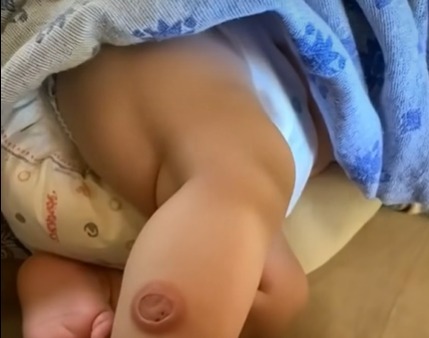
Sweet Syndrome, also known as acute febrile neutrophilic dermatosis, is a rare inflammatory skin disorder with systemic manifestations. Although uncommon, it is critical for primary care physicians to recognize its clinical signs and consider it during differential diagnosis—especially when symptoms rapidly follow medication changes.
This article outlines a documented clinical case and offers a comprehensive review of Sweet Syndrome, including its presentation, diagnostic criteria, treatment, and clinical significance, particularly in relation to medication-induced reactions.
Clinical Case Summary
A 55-year-old female patient with a medical history of hypertension and chronic obstructive pulmonary disease (COPD) presented with erythematous, painful facial and neck lesions accompanied by low-grade fever. She had no known allergies and reported smoking approximately 10 cigarettes daily.
Her regular medication regimen included:
Enalapril (6 years)
Inhaled formoterol (2 years)
Due to a deterioration in pulmonary function, her pulmonologist replaced formoterol with a combination of indacaterol and glycopyrronium in capsule inhaler form.
On the second day of the new therapy, the patient developed painful, reddish skin lesions on her cheeks and neck, prompting a visit to her primary care clinic. She denied recent upper respiratory infection symptoms, had used appropriate sun protection, and made no changes to her diet or cosmetic routine.
Referral and Diagnostic Workup
Given the sudden onset and severity of symptoms, the patient was referred urgently to the Dermatology Department. The specialist recommended discontinuation of the new inhaled medication, conducted a skin biopsy, and ordered laboratory testing, including:
Complete blood count (CBC)
Autoimmune panel (e.g., antinuclear antibodies)
Lupus anticoagulant
Infectious serology
Initial labs showed:
Leukocytosis with neutrophilia
Negative autoimmune serology
No signs of infection
Corticosteroid therapy was initiated. Within 24 to 48 hours, the lesions improved significantly and pain diminished.
Final Diagnosis: Sweet Syndrome
Histopathological analysis of the skin biopsy confirmed Sweet Syndrome. The diagnosis was based on both clinical presentation and tissue findings, characterized by dense neutrophilic infiltrates in the dermis without vasculitis.
This case highlights the rare occurrence of Sweet Syndrome following inhaled bronchodilator therapy—specifically, a combination of indacaterol and glycopyrronium, which has not previously been reported in medical literature as a trigger for this condition.

What Is Sweet Syndrome?
Sweet Syndrome is classified among neutrophilic dermatoses. It typically presents with:
Painful erythematous plaques or nodules
Sudden onset
Fever
Leukocytosis
The lesions are often bilaterally distributed and asymmetrical, typically affecting the face, neck, upper trunk, and extremities.
Common Symptoms:
Low-grade to moderate fever
Painful skin lesions (papules or plaques)
Fatigue or malaise
Joint pain or ocular symptoms (in some cases)
Diagnostic Criteria for Sweet Syndrome
According to Su and Liu (1986) and updated clinical guidelines, the diagnosis is made using a combination of major and minor criteria:
Major Criteria:
Abrupt onset of painful erythematous plaques or nodules
Histopathology showing dense neutrophilic infiltrate without vasculitis
Minor Criteria (at least two required):
Fever >38°C
Association with malignancy, inflammatory disease, or drug exposure
Leukocytosis
Excellent response to systemic corticosteroids
Elevated erythrocyte sedimentation rate (ESR)
Etiology and Triggers
The exact cause of Sweet Syndrome is not fully understood, but several triggers have been identified, including:
Upper respiratory tract infections
Autoimmune conditions (e.g., lupus, rheumatoid arthritis)
Hematologic malignancies (e.g., leukemia)
Solid tumors
Medications
Drug-Induced Sweet Syndrome
Several classes of drugs have been linked to Sweet Syndrome, including:
Antibiotics
Oral contraceptives
Colony-stimulating factors
Antiepileptics
Antihypertensives
Though rarely associated, this case introduces a potential link between inhaled long-acting bronchodilators and Sweet Syndrome, emphasizing the need for ongoing pharmacovigilance and clinician awareness.
Treatment and Prognosis
The first-line treatment for Sweet Syndrome is systemic corticosteroids (e.g., prednisone), which often result in a rapid resolution of symptoms within a few days.
In refractory or recurrent cases, alternative therapies may include:
Colchicine
Dapsone
Potassium iodide
Immunosuppressive agents (e.g., cyclosporine, azathioprine)
Early diagnosis and treatment significantly improve outcomes and help prevent systemic involvement.
Differential Diagnosis
Due to its varied presentation, Sweet Syndrome must be distinguished from:
Urticaria
Contact dermatitis
Lupus erythematosus
Toxicodermas
Infectious exanthems
Skin biopsy and blood tests are essential in ruling out these conditions and confirming the diagnosis.
Clinical Significance
Sweet Syndrome, though rare, is important because it may serve as a marker for underlying systemic disease, particularly:
Hematologic malignancies (e.g., myelodysplastic syndromes)
Autoimmune disorders
Infectious or drug-induced reactions
Therefore, once diagnosed, patients should undergo a thorough systemic evaluation, including imaging and laboratory tests, to rule out associated conditions.
Implications for Primary Care
Primary care physicians play a vital role in:
Recognizing early signs of neutrophilic dermatoses
Initiating appropriate referrals to dermatology or internal medicine
Suspecting drug-induced reactions, even with uncommon medications
Prompt diagnosis allows for timely treatment and prevention of systemic complications.
Conclusion
Sweet Syndrome remains a diagnostic challenge due to its rarity and broad differential. However, awareness of its presentation—especially in the context of recent medication changes—can lead to rapid diagnosis and effective treatment.
This clinical case illustrates the importance of considering Sweet Syndrome in patients presenting with acute skin lesions and systemic symptoms, particularly when other common conditions have been excluded. It also highlights the need for primary care physicians to remain vigilant about uncommon side effects of both new and established medications.
Melania Trump Modeling Career Resurfaces on Russian TV After Trump’s Reelection
Melania Trump’s modeling career has resurfaced in global headlines after Russian state television aired images from her early days in fashion shortly after Donald Trump’s 2024 reelection. The unusual broadcast reignited international discussions about her past in the modeling industry, her role as First Lady, and how the media chooses to portray spouses of world leaders.
This renewed focus highlights how personal history can influence public perception, especially when it belongs to someone who has transitioned from the fashion world to one of the most closely watched political stages in the world.
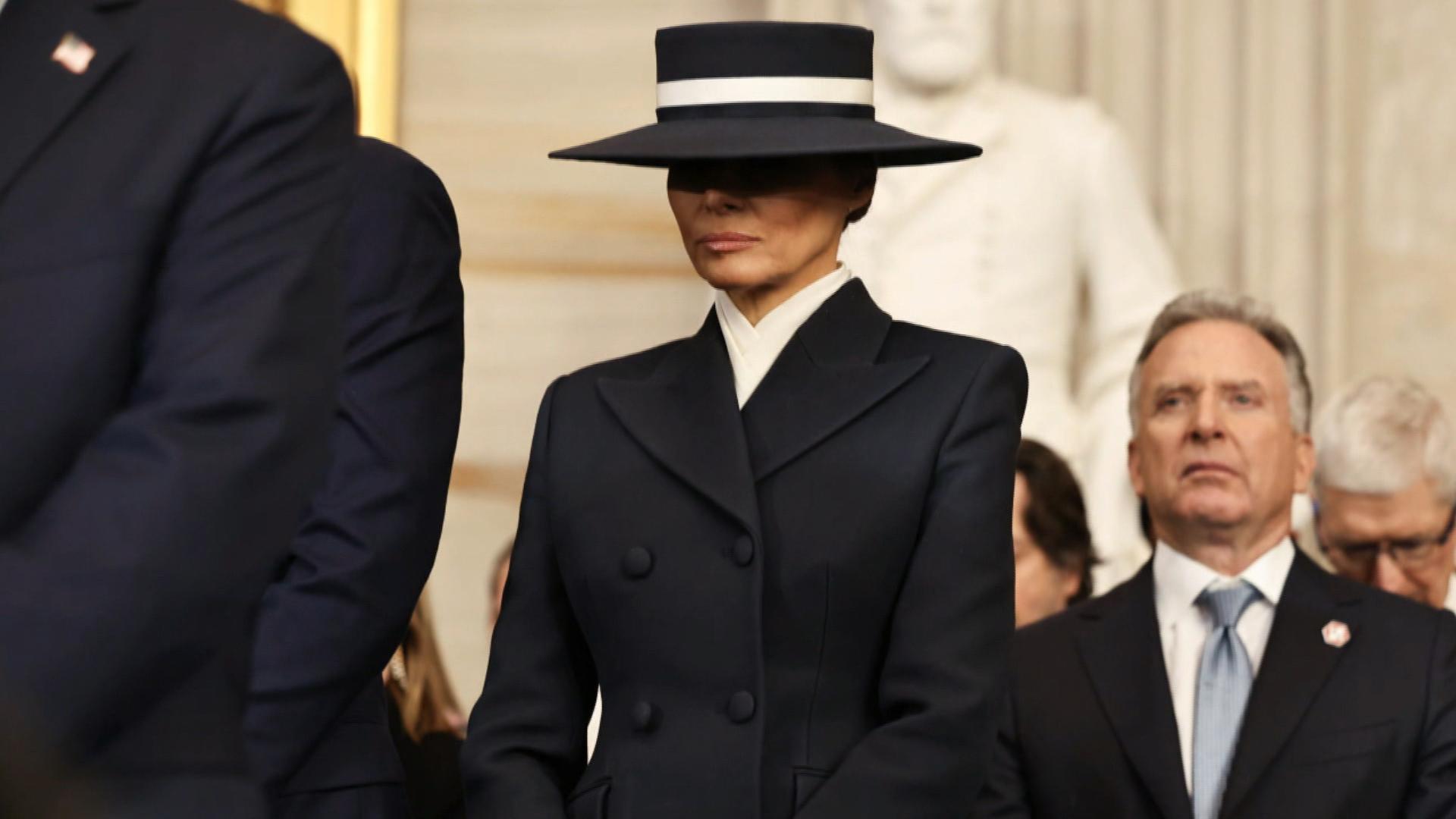
Early Life and Entry into Modeling
Melania Trump, born Melanija Knavs in Slovenia, began her modeling journey as a teenager. Her striking looks and disciplined work ethic quickly set her apart. By her late teens, she was already appearing in local campaigns before moving on to bigger opportunities in Milan and Paris.
The European fashion capitals provided the foundation for Melania Trump’s modeling career, where she worked with established photographers and fashion houses. Her move to New York City in the mid-1990s marked a turning point, bringing her closer to global recognition and ultimately introducing her to businessman Donald Trump.
Breakthrough in Fashion
In New York, Melania signed with prominent modeling agencies and began landing features in respected magazines. She appeared in Harper’s Bazaar, Vogue, and eventually graced the cover of GQ magazine in 2000.
That GQ shoot remains one of the most talked-about moments in Melania Trump’s modeling career. The cover, photographed in a luxury setting, became both a symbol of her success and a recurring subject in media discussions about her past. Years later, the cover would again attract attention — including from her husband, who reportedly asked for a framed copy for his office.

Russian TV Brings Her Past Back Into Focus
After Donald Trump’s return to the White House in 2024, Russian state television aired the GQ cover and other images from her career. This came during a political segment, surprising viewers who had expected election analysis rather than fashion history.
The broadcast was highlighted by Russia Media Monitor, sparking global reactions online. For many, the decision to spotlight Melania Trump’s modeling career in a political program raised questions about media framing and the boundaries between personal history and public office.

Melania’s Defense of Her Work
Throughout her time in the public eye, Melania has openly defended her modeling career. In 2023, she released a video statement addressing those who criticized her past photoshoots. She stated:
“The human body has always been a subject for art. Fashion photography is simply one of the modern forms of that expression.”
Her words reinforced the idea that Melania Trump’s modeling career was rooted in professionalism and artistic expression, rather than controversy. For her, the work represented discipline, creativity, and independence — qualities that shaped her before she stepped into the role of First Lady.

Cultural Reactions and Media Ethics
The resurfacing of her modeling photos on Russian TV opened broader debates about cultural norms, ethics in media, and respect for personal histories. While some audiences saw the broadcast as an attempt at sensationalism, others noted it reflected how different countries portray political spouses.
In the United States, public reactions were mixed. Supporters praised her professionalism and resilience, emphasizing that Melania Trump’s modeling career was an achievement worth respecting. Critics, however, argued that such broadcasts blur the line between personal and political life, forcing public figures into unnecessary scrutiny.
A Glimpse into Her Memoir
Adding another layer to the discussion, Melania released her memoir in late 2024. The book provides intimate details about her early life, the challenges of building a career in fashion, and the transition into becoming a public figure alongside Donald Trump.
Within its pages, she highlights both struggles and triumphs from Melania Trump’s modeling career, including moments that tested her confidence and those that reinforced her independence. The memoir paints her as someone who embraced opportunities while staying true to her values — a perspective that helps humanize her beyond political labels.

The Intersection of Fashion and Politics
Melania Trump’s journey illustrates how fashion and politics often overlap. Her background in modeling gave her a strong sense of presentation, which later influenced her public image as First Lady. From wardrobe choices to official appearances, her style has been carefully observed and sometimes critiqued, showing how remnants of Melania Trump’s modeling career continue to shape her identity today.
Fashion historians often point out that her elegance and restraint in public appearances reflect her years in the fashion industry, where image and detail matter greatly.
Why Her Story Still Resonates
The renewed attention around Melania shows how personal history never fully disappears in the digital age. With every reelection, memoir release, or international broadcast, Melania Trump’s modeling career returns to public conversation.
Her story resonates because it combines two powerful narratives: one of a young woman pursuing her dream in the competitive world of fashion, and another of a First Lady navigating one of the world’s most demanding political roles. Together, they create a portrait of resilience and adaptability.

Conclusion
The resurgence of Melania Trump’s modeling career on Russian TV after Donald Trump’s reelection highlights how global media continues to revisit her past. What began as an ambitious career in fashion has become an enduring part of her identity, both celebrated and scrutinized on the world stage.
For Melania, the conversation around her career is not just about photographs or magazine covers. It is about independence, artistic expression, and the ongoing challenge of balancing a private past with the responsibilities of public life.
As debates continue, one fact remains clear: Melania Trump’s modeling career is inseparable from her journey and will continue to influence how the world views her in years to come.
Melania Trump’s modeling career has resurfaced in global headlines after Russian state television aired images from her early days in fashion shortly after Donald Trump’s 2024 reelection. The unusual broadcast reignited international discussions about her past in the modeling industry, her role as First Lady, and how the media chooses to portray spouses of world leaders.
This renewed focus highlights how personal history can influence public perception, especially when it belongs to someone who has transitioned from the fashion world to one of the most closely watched political stages in the world.

Early Life and Entry into Modeling
Melania Trump, born Melanija Knavs in Slovenia, began her modeling journey as a teenager. Her striking looks and disciplined work ethic quickly set her apart. By her late teens, she was already appearing in local campaigns before moving on to bigger opportunities in Milan and Paris.
The European fashion capitals provided the foundation for Melania Trump’s modeling career, where she worked with established photographers and fashion houses. Her move to New York City in the mid-1990s marked a turning point, bringing her closer to global recognition and ultimately introducing her to businessman Donald Trump.
Breakthrough in Fashion
In New York, Melania signed with prominent modeling agencies and began landing features in respected magazines. She appeared in Harper’s Bazaar, Vogue, and eventually graced the cover of GQ magazine in 2000.
That GQ shoot remains one of the most talked-about moments in Melania Trump’s modeling career. The cover, photographed in a luxury setting, became both a symbol of her success and a recurring subject in media discussions about her past. Years later, the cover would again attract attention — including from her husband, who reportedly asked for a framed copy for his office.

Russian TV Brings Her Past Back Into Focus
After Donald Trump’s return to the White House in 2024, Russian state television aired the GQ cover and other images from her career. This came during a political segment, surprising viewers who had expected election analysis rather than fashion history.
The broadcast was highlighted by Russia Media Monitor, sparking global reactions online. For many, the decision to spotlight Melania Trump’s modeling career in a political program raised questions about media framing and the boundaries between personal history and public office.

Melania’s Defense of Her Work
Throughout her time in the public eye, Melania has openly defended her modeling career. In 2023, she released a video statement addressing those who criticized her past photoshoots. She stated:
“The human body has always been a subject for art. Fashion photography is simply one of the modern forms of that expression.”
Her words reinforced the idea that Melania Trump’s modeling career was rooted in professionalism and artistic expression, rather than controversy. For her, the work represented discipline, creativity, and independence — qualities that shaped her before she stepped into the role of First Lady.
Cultural Reactions and Media Ethics
The resurfacing of her modeling photos on Russian TV opened broader debates about cultural norms, ethics in media, and respect for personal histories. While some audiences saw the broadcast as an attempt at sensationalism, others noted it reflected how different countries portray political spouses.
In the United States, public reactions were mixed. Supporters praised her professionalism and resilience, emphasizing that Melania Trump’s modeling career was an achievement worth respecting. Critics, however, argued that such broadcasts blur the line between personal and political life, forcing public figures into unnecessary scrutiny.
A Glimpse into Her Memoir
Adding another layer to the discussion, Melania released her memoir in late 2024. The book provides intimate details about her early life, the challenges of building a career in fashion, and the transition into becoming a public figure alongside Donald Trump.
Within its pages, she highlights both struggles and triumphs from Melania Trump’s modeling career, including moments that tested her confidence and those that reinforced her independence. The memoir paints her as someone who embraced opportunities while staying true to her values — a perspective that helps humanize her beyond political labels.

The Intersection of Fashion and Politics
Melania Trump’s journey illustrates how fashion and politics often overlap. Her background in modeling gave her a strong sense of presentation, which later influenced her public image as First Lady. From wardrobe choices to official appearances, her style has been carefully observed and sometimes critiqued, showing how remnants of Melania Trump’s modeling career continue to shape her identity today.
Fashion historians often point out that her elegance and restraint in public appearances reflect her years in the fashion industry, where image and detail matter greatly.
Why Her Story Still Resonates
The renewed attention around Melania shows how personal history never fully disappears in the digital age. With every reelection, memoir release, or international broadcast, Melania Trump’s modeling career returns to public conversation.
Her story resonates because it combines two powerful narratives: one of a young woman pursuing her dream in the competitive world of fashion, and another of a First Lady navigating one of the world’s most demanding political roles. Together, they create a portrait of resilience and adaptability.
Conclusion
The resurgence of Melania Trump’s modeling career on Russian TV after Donald Trump’s reelection highlights how global media continues to revisit her past. What began as an ambitious career in fashion has become an enduring part of her identity, both celebrated and scrutinized on the world stage.
For Melania, the conversation around her career is not just about photographs or magazine covers. It is about independence, artistic expression, and the ongoing challenge of balancing a private past with the responsibilities of public life.
As debates continue, one fact remains clear: Melania Trump’s modeling career is inseparable from her journey and will continue to influence how the world views her in years to come.
15 minutes ago, Prince William delivered a sorrowful announcement that has shaken the entire United Kingdom and beyond. With a heavy heart, the heir to the throne stepped before the cameras and confirmed that the royal family has suffered a devastating blow. His solemn words, filled with grief and restraint, echoed through the halls of Buckingham Palace and into the homes of millions. This moment, already being called one of the darkest in recent royal history, has left the public reeling with shock, sadness, and uncertainty.

In his statement, William’s voice was steady yet carried the weight of unimaginable pain. He did not speak as just a future king, but as a son, a husband, and a father caught in the middle of an immense personal tragedy. While details remain scarce, the confirmation alone was enough to send waves of emotion throughout the nation. Crowds have already begun gathering outside palace gates, laying flowers and standing in silence, waiting for further updates.
The atmosphere in London is described as eerily quiet. Normally bustling streets have slowed as people pause to absorb the news. Radios and televisions across the country have switched to live coverage, and anchors are struggling to maintain composure as they recount William’s announcement. The gravity of his words, though brief, suggests a loss that will forever alter the royal household and leave a permanent mark on British history.
What makes this moment even more heart-wrenching is the symbolic role William plays in the hearts of many Britons. Known for his steady demeanor and sense of duty, his visible sorrow pierced through the royal image of composure and dignity. For years, he has shouldered immense responsibility, balancing tradition with the expectations of a modern monarchy. Yet today, the future king allowed the world to see the human behind the title, a man weighed down by grief but still determined to fulfill his duty.

The announcement has also sparked speculation about how the monarchy will navigate this turbulent time. Royal watchers note that in moments of crisis, the family traditionally leans on unity and shared strength. William’s choice to personally deliver the statement highlights both the seriousness of the event and his readiness to step forward as a leader in times of hardship. His words carried not just sorrow, but also a sense of resolve—an implicit promise that the family will endure despite the pain.
In the hours ahead, the world will undoubtedly learn more about the tragedy that has struck the House of Windsor. But even now, one thing is clear: William’s sorrowful message has touched hearts across England and beyond. His raw humanity in the face of loss has reminded many that behind the grandeur of royalty lies a family bound by love, grief, and resilience. This announcement will be remembered not only for the sadness it conveyed, but also for the strength it revealed in a man destined to be king.

In his statement, William’s voice was steady yet carried the weight of unimaginable pain. He did not speak as just a future king, but as a son, a husband, and a father caught in the middle of an immense personal tragedy. While details remain scarce, the confirmation alone was enough to send waves of emotion throughout the nation. Crowds have already begun gathering outside palace gates, laying flowers and standing in silence, waiting for further updates.
The atmosphere in London is described as eerily quiet. Normally bustling streets have slowed as people pause to absorb the news. Radios and televisions across the country have switched to live coverage, and anchors are struggling to maintain composure as they recount William’s announcement. The gravity of his words, though brief, suggests a loss that will forever alter the royal household and leave a permanent mark on British history.
What makes this moment even more heart-wrenching is the symbolic role William plays in the hearts of many Britons. Known for his steady demeanor and sense of duty, his visible sorrow pierced through the royal image of composure and dignity. For years, he has shouldered immense responsibility, balancing tradition with the expectations of a modern monarchy. Yet today, the future king allowed the world to see the human behind the title, a man weighed down by grief but still determined to fulfill his duty.

The announcement has also sparked speculation about how the monarchy will navigate this turbulent time. Royal watchers note that in moments of crisis, the family traditionally leans on unity and shared strength. William’s choice to personally deliver the statement highlights both the seriousness of the event and his readiness to step forward as a leader in times of hardship. His words carried not just sorrow, but also a sense of resolve—an implicit promise that the family will endure despite the pain.
In the hours ahead, the world will undoubtedly learn more about the tragedy that has struck the House of Windsor. But even now, one thing is clear: William’s sorrowful message has touched hearts across England and beyond. His raw humanity in the face of loss has reminded many that behind the grandeur of royalty lies a family bound by love, grief, and resilience. This announcement will be remembered not only for the sadness it conveyed, but also for the strength it revealed in a man destined to be king.

A few days later, Marcus was back on his usual bus route, navigating the bustling streets of Atlanta. He had almost put the incident behind him, returning to a routine that demanded his full attention. But his life was about to take a turn he never could have anticipated.
It was a quiet Wednesday afternoon when Marcus received an unexpected knock on his apartment door. He opened it to find a smartly dressed woman with a professional demeanor standing there. “Hello, Mr. Johnson,” she said with a warm smile. “My name is Claire Thompson. I’m an assistant to Eleanor Whitmore. She would like to meet you.”
Marcus was taken aback. “The woman from the park?” he asked, half in disbelief.
“Yes,” Claire replied. “She’s very eager to thank you in person.”
Arrangements were made, and a few days later, Marcus found himself standing outside a luxurious office building downtown, Kayla clutching his hand. They were ushered into an opulent office filled with art and floor-to-ceiling windows overlooking the city. Eleanor Whitmore, looking much healthier, rose from behind her desk to greet them.
“Marcus, it’s a pleasure to meet you again,” she said warmly, extending her hand. “And this must be Kayla. Thank you both. You saved my life.”
Marcus shifted uncomfortably, not accustomed to such attention. “I just did what anyone would do,” he insisted.
“Not everyone would have acted so quickly,” Eleanor replied, her eyes full of gratitude. “You gave me a second chance, and I want to help give you one, too.”
She gestured for them to sit, and as they did, Eleanor shared some of her own story—her rise from humble beginnings to becoming one of the most successful businesswomen in the state. “I understand struggle,” she said. “And I also understand opportunity.”
Marcus listened, unsure of where the conversation was headed. Then Eleanor made her offer. “I’d like to set up a trust fund for Kayla’s education. Whatever she decides to do, she’ll have the means to pursue it without the financial burden.”
Marcus was stunned. “I… I don’t know what to say,” he stammered, overwhelmed.
“Just say you’ll accept,” Eleanor replied with a smile.
Tears welled up in Marcus’s eyes as he nodded. “Thank you,” he managed to say, his voice choked with emotion.
But Eleanor wasn’t done. “And for you, Marcus,” she continued, “I want to offer you a position at my company. We could use someone with your instinct and dedication. It would mean a better salary, benefits, and more time to spend with Kayla.”
Marcus sat in disbelief, his heart full. “How can I ever repay you?” he asked, his voice still shaky.
Eleanor smiled gently. “You already did,” she replied softly. “You saved my life. Now it’s time to live yours to the fullest.”
As Marcus and Kayla walked out of the building, hand in hand, the weight of their struggles lifted slightly. The future, for the first time in a long time, seemed full of possibilities and hope. And as they stepped into the warm embrace of the Atlanta sun, Marcus knew that their lives had truly changed forever.
Hospitals are strange intersections of life and death — places where grief and hope breathe the same air.
Hospitals are peculiar crossroads between life and death—spaces where sorrow and hope quietly coexist, sharing the very same air.
Dr. Jonathan Mercer knew that better than anyone.
No one understood this paradox more intimately than Dr. Jonathan Mercer.
But nothing in his twenty years of medicine prepared him for what began in Room 312B.
Yet, despite two decades in the field of medicine, nothing could have prepared him for what unfolded within the walls of Room 312B.
The patient was Michael Reeves — twenty-nine, a firefighter crushed beneath falling concrete during a warehouse collapse.
The patient occupying that room was Michael Reeves—just twenty-nine years old, a firefighter who had been critically injured when a warehouse collapsed, trapping him beneath a cascade of falling concrete.
He’d been in a coma for three years. His heart had stopped twice on the table.
Michael had remained in a coma for three long years. Twice, during surgery, his heart had ceased beating.
The miracle wasn’t that he’d fallen asleep — it was that he’d survived at all.
The true miracle wasn’t that he had slipped into a coma—but that he had managed to survive at all.
The staff called him the Sleeping Hero.
Among the hospital staff, he became known simply as “the Sleeping Hero.”
Families of other patients often slipped quietly into his room, whispering prayers or leaving flowers.
Visitors—especially family members of other patients—would often quietly enter his room, offering whispered prayers or gently placing flowers beside his bed.
Michael’s presence gave people hope. But then, something strange began to happen.
There was something about Michael’s still presence that gave people a sense of hope. But then, something strange—something inexplicable—began to occur.
Nurse Amy was the first. Then Jenna. Then two more.
It started with Nurse Amy. Then Jenna. Then two others followed.
All four women who had cared for Michael became pregnant — within months of each other.
Each of the four nurses who had spent time caring for Michael suddenly became pregnant—remarkably, all within just a few months of one another.
At first, it was hospital gossip. Coincidence, maybe fate.
Initially, it was nothing more than passing gossip among the staff. A coincidence, perhaps. Or fate.
Until the fifth nurse came forward, pale and trembling, clutching a positive pregnancy test.
That was until a fifth nurse stepped forward—pale, shaking, and holding a positive pregnancy test in her hands.
“I haven’t been with anyone,” Laura Kane whispered, shaking. “I work nights. My life’s boring. I swear, Doctor, I haven’t—”
“I haven’t been with anyone,” Laura Kane whispered through trembling lips. “I work the night shift. My life’s boring. I swear, Doctor, I haven’t—”
She stopped, choking on the words. “Except my shifts with Michael.”
She faltered, unable to finish the sentence. Then she whispered, “Except… my shifts with Michael.”
Mercer stared, his rational mind colliding with something it couldn’t categorize.
Mercer stared at her, his logical, scientific mind crashing against something that defied categorization.
Five women. All assigned to the same patient. All conceiving under impossible circumstances.
Five women. All tasked with the care of the same man. All pregnant—under circumstances that seemed medically impossible.
That night, long after the halls of St. Catherine’s fell silent, Mercer slipped into Room 312B.
Later that night, long after St. Catherine’s Hospital had gone quiet, Mercer quietly stepped into Room 312B.
The air was sterile and cold, faintly laced with disinfectant.
The room’s air was sterile and cold, carrying the sharp, familiar scent of disinfectant.
Machines blinked steadily beside the bed. Michael lay motionless, his chest rising and falling with machine-perfect rhythm.
Beside the bed, the machines blinked rhythmically. Michael lay perfectly still, his chest rising and falling in exact sync with the ventilator.
“You’re causing chaos, you know that?” Mercer muttered, his voice barely above a whisper.
“You’re stirring up chaos, you know that?” Mercer murmured, barely above a whisper.
Of course, the man didn’t respond.
Naturally, there was no reply.
Mercer installed a small hidden camera in the ceiling vent — a breach of protocol, but he needed to know.
Mercer discreetly installed a small camera inside the ceiling vent—technically a violation of hospital protocol, but he needed answers.
If someone was sneaking in, if there was misconduct, the footage would show it.
If someone was entering the room without authorization—or if something inappropriate was occurring—the footage would reveal it.
The next morning, he watched.
The following morning, he reviewed the video.
The screen showed Nurse Laura entering the room around 2:13 a.m.
On-screen, he saw Nurse Laura enter the room at precisely 2:13 a.m.
She adjusted the IV line, checked vitals — normal procedure.
She adjusted Michael’s IV line and checked his vitals—standard procedure.
Then she froze. Slowly, she reached out and brushed Michael’s hand, whispering something the camera couldn’t pick up.
Then she suddenly paused. Gently, she reached out and brushed Michael’s hand, whispering something inaudible to the camera.
She sat beside him and wept quietly.
She sat beside his bed and began to cry—softly, quietly.
There was no misconduct. Only grief. Compassion. Faith.
There was no wrongdoing. Only grief. Pure compassion. And an unshaken faith.
Still, Mercer kept watching.
Yet, Mercer continued to watch.
Hospitals are peculiar crossroads between life and death—spaces where sorrow and hope quietly coexist, sharing the very same air.
Dr. Jonathan Mercer knew that better than anyone.
No one understood this paradox more intimately than Dr. Jonathan Mercer.
But nothing in his twenty years of medicine prepared him for what began in Room 312B.
Yet, despite two decades in the field of medicine, nothing could have prepared him for what unfolded within the walls of Room 312B.
The patient was Michael Reeves — twenty-nine, a firefighter crushed beneath falling concrete during a warehouse collapse.
The patient occupying that room was Michael Reeves—just twenty-nine years old, a firefighter who had been critically injured when a warehouse collapsed, trapping him beneath a cascade of falling concrete.
He’d been in a coma for three years. His heart had stopped twice on the table.
Michael had remained in a coma for three long years. Twice, during surgery, his heart had ceased beating.
The miracle wasn’t that he’d fallen asleep — it was that he’d survived at all.
The true miracle wasn’t that he had slipped into a coma—but that he had managed to survive at all.
The staff called him the Sleeping Hero.
Among the hospital staff, he became known simply as “the Sleeping Hero.”
Families of other patients often slipped quietly into his room, whispering prayers or leaving flowers.
Visitors—especially family members of other patients—would often quietly enter his room, offering whispered prayers or gently placing flowers beside his bed.
Michael’s presence gave people hope. But then, something strange began to happen.
There was something about Michael’s still presence that gave people a sense of hope. But then, something strange—something inexplicable—began to occur.
Nurse Amy was the first. Then Jenna. Then two more.
It started with Nurse Amy. Then Jenna. Then two others followed.
All four women who had cared for Michael became pregnant — within months of each other.
Each of the four nurses who had spent time caring for Michael suddenly became pregnant—remarkably, all within just a few months of one another.
At first, it was hospital gossip. Coincidence, maybe fate.
Initially, it was nothing more than passing gossip among the staff. A coincidence, perhaps. Or fate.
Until the fifth nurse came forward, pale and trembling, clutching a positive pregnancy test.
That was until a fifth nurse stepped forward—pale, shaking, and holding a positive pregnancy test in her hands.
“I haven’t been with anyone,” Laura Kane whispered, shaking. “I work nights. My life’s boring. I swear, Doctor, I haven’t—”
“I haven’t been with anyone,” Laura Kane whispered through trembling lips. “I work the night shift. My life’s boring. I swear, Doctor, I haven’t—”
She stopped, choking on the words. “Except my shifts with Michael.”
She faltered, unable to finish the sentence. Then she whispered, “Except… my shifts with Michael.”
Mercer stared, his rational mind colliding with something it couldn’t categorize.
Mercer stared at her, his logical, scientific mind crashing against something that defied categorization.
Five women. All assigned to the same patient. All conceiving under impossible circumstances.
Five women. All tasked with the care of the same man. All pregnant—under circumstances that seemed medically impossible.
That night, long after the halls of St. Catherine’s fell silent, Mercer slipped into Room 312B.
Later that night, long after St. Catherine’s Hospital had gone quiet, Mercer quietly stepped into Room 312B.
The air was sterile and cold, faintly laced with disinfectant.
The room’s air was sterile and cold, carrying the sharp, familiar scent of disinfectant.
Machines blinked steadily beside the bed. Michael lay motionless, his chest rising and falling with machine-perfect rhythm.
Beside the bed, the machines blinked rhythmically. Michael lay perfectly still, his chest rising and falling in exact sync with the ventilator.
“You’re causing chaos, you know that?” Mercer muttered, his voice barely above a whisper.
“You’re stirring up chaos, you know that?” Mercer murmured, barely above a whisper.
Of course, the man didn’t respond.
Naturally, there was no reply.
Mercer installed a small hidden camera in the ceiling vent — a breach of protocol, but he needed to know.
Mercer discreetly installed a small camera inside the ceiling vent—technically a violation of hospital protocol, but he needed answers.
If someone was sneaking in, if there was misconduct, the footage would show it.
If someone was entering the room without authorization—or if something inappropriate was occurring—the footage would reveal it.
The next morning, he watched.
The following morning, he reviewed the video.
The screen showed Nurse Laura entering the room around 2:13 a.m.
On-screen, he saw Nurse Laura enter the room at precisely 2:13 a.m.
She adjusted the IV line, checked vitals — normal procedure.
She adjusted Michael’s IV line and checked his vitals—standard procedure.
Then she froze. Slowly, she reached out and brushed Michael’s hand, whispering something the camera couldn’t pick up.
Then she suddenly paused. Gently, she reached out and brushed Michael’s hand, whispering something inaudible to the camera.
She sat beside him and wept quietly.
She sat beside his bed and began to cry—softly, quietly.
There was no misconduct. Only grief. Compassion. Faith.
There was no wrongdoing. Only grief. Pure compassion. And an unshaken faith.
Still, Mercer kept watching.
Yet, Mercer continued to watch.
 Top Video Viral
Top Video Viral
